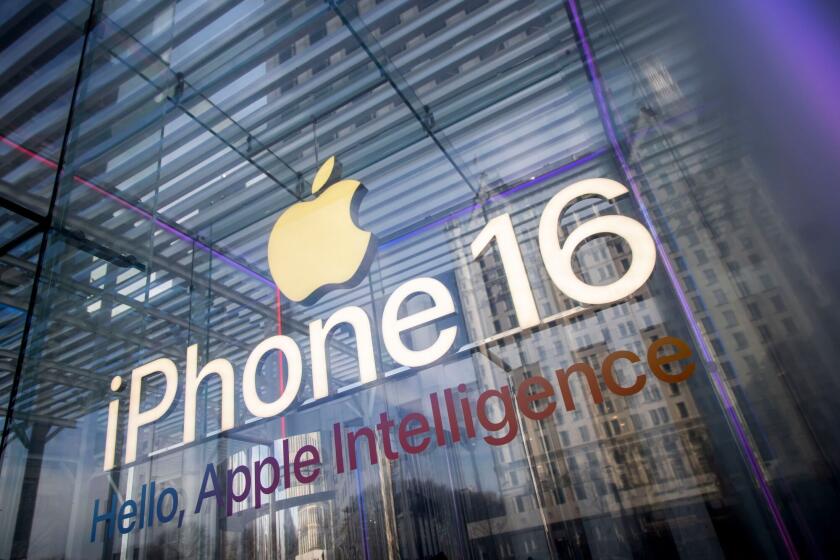CEO revamping Sprint for the future
- Share via
Five months ago, Dan Hesse took a job many people didn’t want.
He was charged with rebuilding Sprint Nextel Corp., the nation’s third-largest wireless carrier, which lost 1.2 million subscribers last year. Its stock lost more than half its value in that time, and it was saddled with more than $30 billion in losses from its combination with Nextel Communications -- a deal studied by business school students as one of the worst ever.
Hesse, a former chief executive of AT&T; Inc.’s wireless unit, took the top job at Sprint and has made bold changes. He cleared out old management and moved the company to Overland Park, Kan. He restructured the notoriously poor customer service operations and pieced together a $12-billion deal with Google Inc. and Intel Corp. and cable service operators to build a broadband wireless network on WiMax technology.
The jury is still out on those moves. Sprint lost 1.1 million subscribers in the first quarter and ranked last among the biggest wireless companies in a customer satisfaction survey.
In an interview, Hesse talked about Sprint’s overhaul and its place in the future of wireless technology.
--
How far along are you on the checklist of things to be done to revive Sprint?
I feel good about what we’ve done and what we’ve accomplished in five months, but if you were to use the baseball game analogy, I’d say we are in the third inning. We’ve focused on improving the customer experience and we’re seeing improvement in churn.
--
What changes are you making to customer service?
More people are held accountable. If someone calls because they’ve been dropping calls, Kathy Walker, who runs the network organization, owns that number. If someone calls because they either have found something on their bill that they didn’t order or they did order something that’s not on there, the sales organization owns that number and gets held accountable for that. If someone calls customer care and their problem is not taken care of and they call again and again, that is what I hold Bob Johnson, who is in charge of customer care, accountable for.
--
Where have you found the most resistance to change?
I haven’t found much resistance at all. If all things were equal, I’d much rather take over a company in great shape and going well. But if there is an advantage, it’s the readiness to embrace change because everyone knows modus operandi isn’t working.
--
How did the WiMax joint venture with Clearwire come about? What’s in it for you and your partners?
Clearly there were financial incentives to bring in cash and capital to help us build out a network more quickly. Google, in terms of building applications for the mobile Internet, has possibilities they understand as well. What if you combined their search with where you were? Then it becomes a much, much more valuable search. For cable companies Comcast, Time Warner and Bright House, it’s their distribution and ability to bundle it. When we build the network, we’re looking for customers and usage because there are a lot of fixed costs.
--
Any concern your relationship with cable companies could complicate the WiMax project?
For them, the key is really providing video to the home in high definition.
When you think of the bandwidth needed to provide 30 to 40 high-definition channels, you still need a pipe into the home for that. What they are looking for is a competitive advantage over their arch-rivals AT&T; and Verizon. This will give it to them. For one to two years, we will have something AT&T; and Verizon won’t have.






